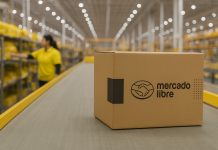As customers rush to the aisles and decide to shop in-store, businesses must keep them engaged long enough for the browsing to transform into purchasing.
One important method to do so is for retailers to create a tailored experience in-store, where relevant offers are extended in real-time. Offering additional payment methods also strengthens the consumer connection.
As outlined in “Big Retail’s Innovation Mandate: Convenience and Personalization,” technology remains a difficulty in collecting, analyzing, and utilizing the data that allows personalization.
A sizable proportion of the more than 300 merchants we surveyed use third-party vendors to implement certain payment schemes.
Respondents were headquartered in the United States or the United Kingdom and had at least 50 shop locations and annual revenues of at least $1 billion for firms based in the United States or £100 million ($127 million) for companies based in the United Kingdom.
The analysis identified a greenfield potential for third-party payment operations and innovations. Only around half of the merchants in the United States and the United Kingdom think they have the correct combination of digital tools to serve their consumers well. And ambitions are high: 33% of US shops intend to offer real-time payments to their customers in the near future.
However, in the short future, a number of specific payment technologies and techniques are also under scrutiny. According to the two tables below, more than a quarter of general merchants intend to design their loyalty programs with the help of third-party suppliers, and a nearly comparable amount of convenience shops and pharmacies intend to do the same.












